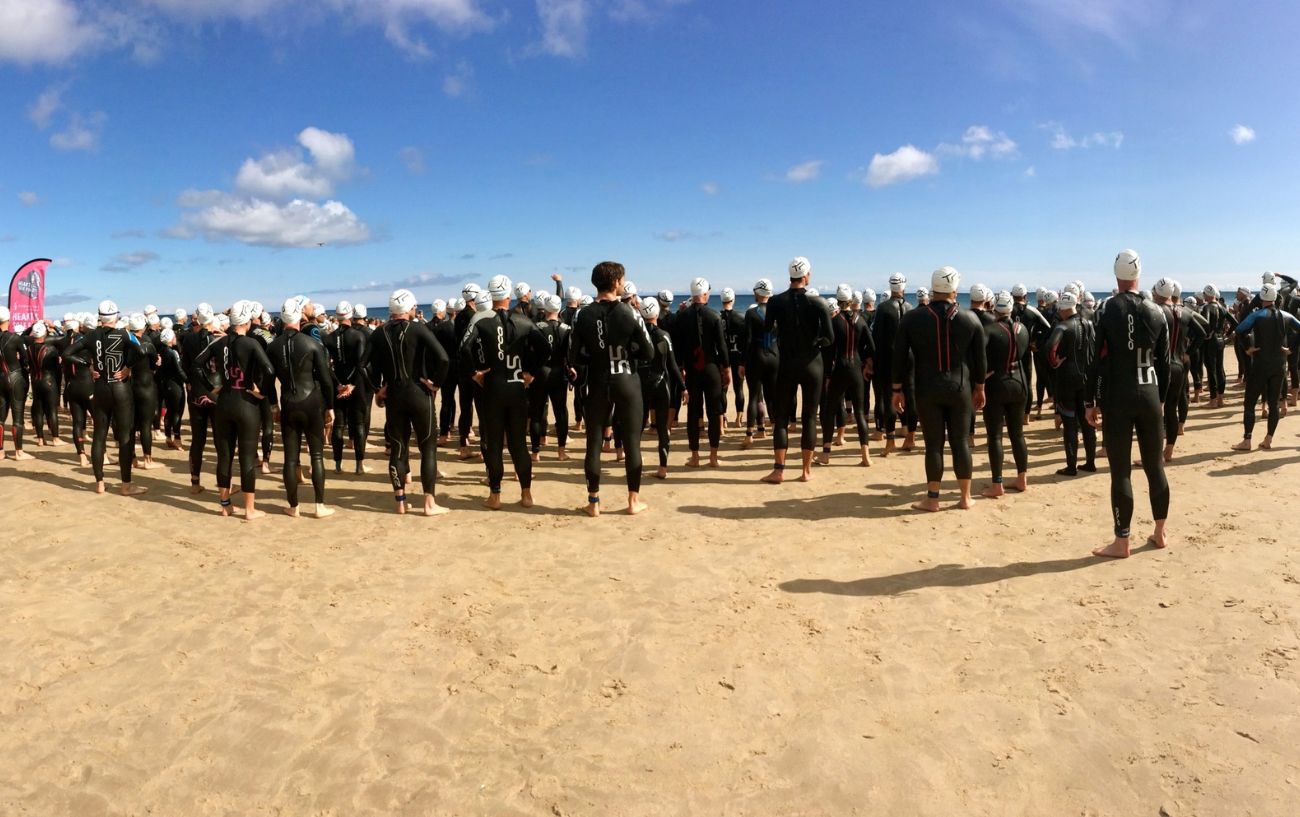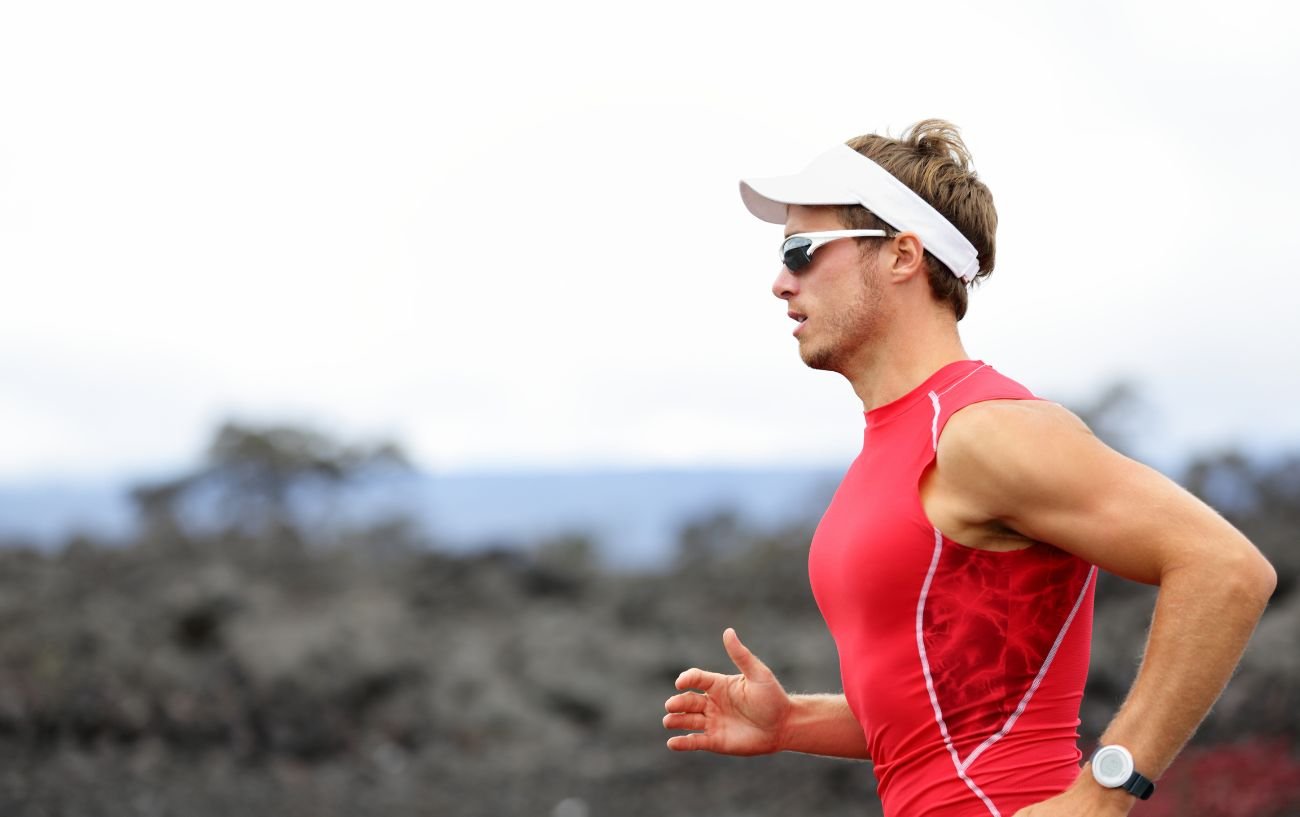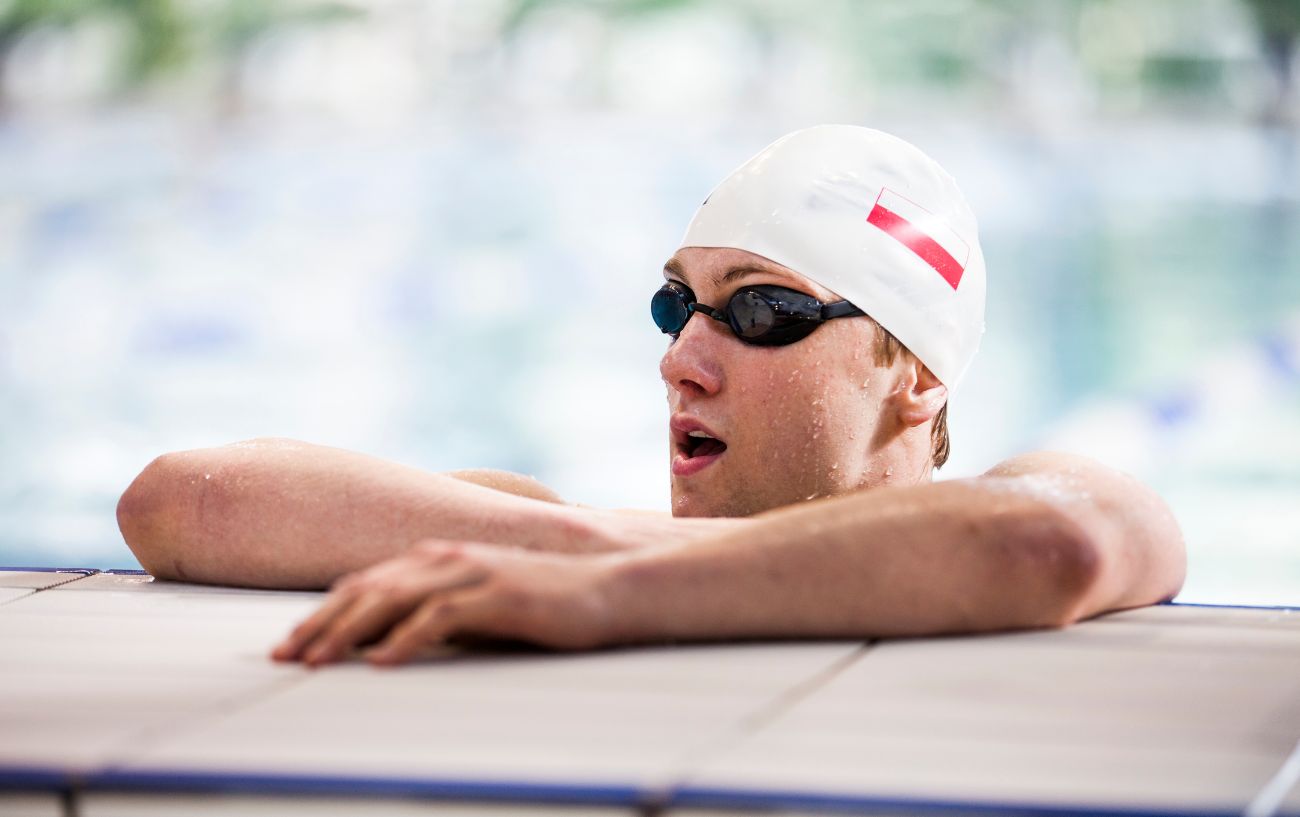If you’re a beginner triathlete or just starting to take an interest in the sport, you’ll understandably be unfamiliar with triathlon lingo.
Questions like “What is a transition?”, “What is an Ironman?” and even “What is a triathlon?” are common among novices.
Furthermore, one of the most frequent points of confusion for triathlon neophytes surrounds triathlon vs Ironman, wondering how a triathlon and an Ironman differ.
Don’t worry; there’s a fairly simple distinction between an Ironman vs triathlon, so while you may have to busy yourself with triathlon training, you won’t have to spend an endless amount of time understanding Ironman vs triathlon events.
The main difference between an Ironman and a triathlon is that an Ironman is one specific kind of triathlon event and a brand, while a triathlon can refer to any type of event that involves swimming, biking, and running.
Ready for a quick primer on the details between a triathlon vs Ironman? Keep reading to get your bearings in the sport.

What Is A Triathlon?
A triathlon is a multi-sport event with three specific disciplines sequenced back to back. Athletes first complete a swim segment, then transition to a bike segment, and then finish with a run.
Between each of the three segments of the triathlon race, there is a “transition,” where the athlete swaps their gear or kit before embarking on the next portion of the event.
The transition time is part of the race time, so the more efficiently you transition, the better.
The swim-to-bike transition involves getting out of the water, taking off your wetsuit (if you wore one), putting on your bike gear, unracking your bike, and getting onto the bike course.
The bike-to-run transition involves returning to the zone where you will rack your bike, taking off your bike gear, putting on your running shoes, and heading out onto the run course.
What Is An Ironman?
An Ironman is a specific triathlon event and the longest standard-distance triathlon.
A full Ironman triathlon involves 140.6 miles of self-propelled travel, broken down into a 2.4-mile swim, a 112-mile bike ride leg, and a 26.2-mile run, which is a full marathon.
Note that the term “Ironman” refers to triathlons and actually refers to a specific branded event.
Ironman is a trademarked name, so an Ironman triathlon is not only a specific distance triathlon but also a triathlon put on by a specific company called Ironman.
There are about 53 Ironman events per year held worldwide.
The Ironman World Championships are held in Kona, Hawaii, every year.
In addition to official Ironman triathlons, there are other triathlons that cover the same distances for each leg as an Ironman (a 2.4-mile swim, a 112-mile bike, and a 26.2-mile run).
However, when those races are put on by organizations other than Ironman, they are simply called “Iron-distance races” rather than an “Ironman.”

An Ironman triathlon (or an Iron-distance triathlon) is a true test of your endurance, as most athletes compete for 10-15 hours or more.
Not only do competitors have to complete all three segments in order to complete the entire event, but they also must do so within a certain time limit.
Ironman triathlons have cutoff times for each individual discipline as well as the total race time.
The cutoff times for Ironman triathlons are typically as follows:
- Swim: Must be finished by 2 hours and 20 minutes after the start.
- Bike: Must be finished by 10 hours and 30 minutes after the start.
- Run/Total Ironman Finish Cutoff Time: Must cross the finish line in less than 17 hours after the start.

Note that the Ironman cutoff times can vary slightly depending on the course, road closure, daylight, and safety.
The purpose of cutoff times in triathlons is to ensure participants are safe in terms of lighting and road closures.
If the athlete does not reach the cutoff times in the earlier stages of the race, the thinking is that the athlete will not be able to make up enough time to finish the race in a reasonable time, so they must exit the course.
Even if you make it through the bike and onto the run portion by the bike cutoff (10 hours and 30 minutes after the start), if you don’t finish the run portion in the next 6 hours and 30 minutes to cross the finish line in under 17 hours, you will be asked to exit the course and/or your result will not be recorded.
Finishing an Ironman triathlon is a huge accomplishment and a medal of honor that demonstrates incredible physical and mental resilience, determination, fitness, and dedication.
Now let’s get into the real details of the differences between Ironman and triathlon!
Ironman Vs Triathlon: What Are The Differences?
People who are relatively unfamiliar with triathlons often aren’t sure what qualifies as an Ironman vs triathlon, and what the differences between Ironman and triathlon are.
The primary differences between triathlon and Ironman are as follows:

#1: An Ironman Is Specific, a Triathlon Is Broad
Ultimately, the primary difference between an Ironman and a triathlon is that an Ironman is a specific triathlon event, whereas a triathlon is a type of sport or event in a general sense.
In much the same way that a 5K is a specific event distance for a running race (5 kilometers), an Ironman is a specific event distance for a triathlon (140.6 miles with a 2.4-mile swim, 112-mile bike leg, and a 26.2-mile run).
Essentially, Ironman is to 5K as running is to triathlon.
As with running (wherein there are different race distances like the 5K, 10K, half marathon (13.1 miles), and marathon (26.2 miles)), there are different standard triathlon race distances that cover longer distances and shorter distances in each discipline.
Here are the main triathlon race distances:
Super Sprint Triathlon
- Swim: 400m
- Bike: 10 km (6.2 miles)
- Run: 2.5 km (about 1.5 miles)
Sprint Triathlon
- Swim: 750m (approximately 0.5 miles)
- Bike: 20 km (12.4 miles)
- Run: 5 km (3.1 miles)

Olympic Triathlon
- Swim: 1500 m (almost 1 mile)
- Bike: 40 km (24.8 miles)
- Run: 10 km (6.2 miles)
Half Ironman 70.3
- Swim: 1.2 miles
- Bike: 56 miles
- Run: 13.1 miles (half marathon)
Ironman Triathlon 140.6
- Swim: 2.4 miles
- Bike: 112 miles
- Run: 26.2 miles (full marathon run)
In addition to these primary triathlon events, there can be any number of random intermediary distances, particularly for smaller, local races.
Therefore, a “triathlon” can refer to any competition that involves a swim, followed by a bike, followed by a run—all of which may be of any distance—.
In contrast, an Ironman race is a specific Ironman distance and format of a triathlon that always involves a 2.4-mile swim, 112-mile bike, and 26.2-mile run.

#2: Ironman vs Triathlon: History
The sport of triathlon originated in 1920 in France.
As athletes always seek to compete and assert their superiority or dominance, the first triathlons were borne out of the hotly debated question, “Which type of athlete is the fittest: a swimmer, cyclist, or runner?”
Although the sport of triathlon has existed for over 100 years, the first Ironman triathlon did not make its appearance until 1978.
This ultra-distance triathlon event was first staged with just 15 participants, each taking on the challenge of the 140.6-mile distance.
The name Ironman is said to have been derived from a statement regarding the winner of what was clearly going to be a grueling triathlon race: “Whoever finishes first, we shall call him the Iron Man.”

#3: Ironman vs Triathlon: Training
Training for any triathlon, including an Ironman triathlon, will always involve swimming, cycling, and running, as these are the three disciplines performed in all triathlon events.
However, Ironman vs triathlon training for shorter triathlons will look quite different, just as training for a mile or 5K running race will be different from training for a full marathon (26.2 miles).
Ironman training is highly time- and energy-intensive. Kristian Blummenfelt holds the Ironman world record at 7:21:12, which is over twice as fast as many Ironman finishers.
Therefore, the focus of full distance Ironman training is on building incredible cardiovascular, muscular, and mental endurance. Athletes may have training plans with upwards of 15-20 hours of workouts per week.
In contrast, training for a sprint distance or Olympic distance triathlon instead of a long-distance triathlon involves much less time commitment and greatly emphasizes speed over endurance.

The world record for a sprint triathlon is a mere 51:15 (9:07 swim, 26:24 bike, and 14:25 run), a speedy time set by Mario Mola at the ITU Edmonton WTS sprint race in 2018.
Although the goal of completing an Ironman might be at least a few years down the line after you first start dipping your toe into the world of triathlons, it’s a lifetime goal that eventually draws many triathletes.
Maybe someday, you will hear the famous words as you cross the iconic finish lines: “You are an Ironman!”
After reading through the exciting challenges of participating in a triathlon, would you consider it? If you are currently a runner and looking to transition from runner to triathlete, we have just the tips and tricks for you to make the transition.
Check out our guide to get started training for your first triathlon.













